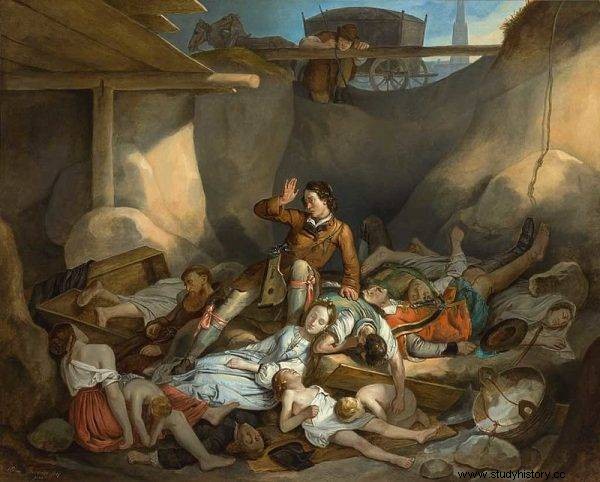Can the black death be used as a biological weapon? Yes! This was found out in Kaffa extremely painfully. The falling corpses were only the beginning of misfortunes for the inhabitants of the city. As it turned out soon - not only for them ...
Humanity has known the plague for millennia. Scientists studying the genome of the dangerous bacteria that cause it are still arguing about how long ago they emerged from relatively harmless Yersinia pseudotuberculosis by mutation. .
All indications are that the Black Death gained the ability to transfer between humans in the organisms of ectoparasites - lice and rats - in the Bronze Age. Since then, the world has been plagued by three great plague pandemics, the most famous of which probably began with the siege of the city then known as Kaffa, and today - Theodosia.
Divine Punishment
So let me say that in the year from the birth of our Lord Jesus Christ, one thousand three hundred and forty-eight, in the famous city of Florence, the jewel of Italian cities, a plague broke out, brought on by the influence of Heavenly bodies, or rightly sent by God to punish our sins.
The mora started a few years before in the East and caused great havoc there. Slowly, moving from place to place, the plague spread to Western countries. Human prevention was no use for her. The cleansing of the cities by the people hired to do so did not help, the ban on the introduction of the sick into the city, various warnings about what to do to keep health, or humble prayers, processions and all pious works - Giovanni Boccaccio begins his famous Decameron .

Plague has struck mankind many times, decimating the population.
The text clearly shows that people in the fourteenth century did not have the faintest idea what exactly the disease plaguing Asia and Europe is, how to deal with it and what paths it is traveling through. And yet it turns out that despite the lack of medical and biological knowledge, Yersinia pestis was already used. for military purposes. Boccaccio was right about one thing:bodies - not blue, but human - were involved in the outbreak.
Unfortunate Kaffa
"The epidemic began during the siege of Kaffa, the Genoese trading post in the Black Sea, by the Mongols of the Golden Horde in 1346," we read in the World History Atlas Christian Grataloup. - “The invaders, affected by the epidemic, use catapults to throw the corpses of the sick into the city. The Genoese ships leaving Kaffa have carried the plague across the Mediterranean Sea:Constantinople, Genoa and Marseille since 1347. The epidemic reaches Cairo and Paris in 1348. It is spreading rapidly across Europe, whose inhabitants do not yet have the antibodies to combat this species of plague. "

"Atlas of the history of the world" by Christian Grataloup, which has just been released by the Sonia Draga publishing house, shows the history of mankind from the perspective of the 21st century.
According to some historians, it was then that the inhabitants were infected and, as a result, a new strain of dangerous bacteria was transferred to the west, deep into Europe. Thanks to the accessible markings on the map included in the new "Atlas ..." Grataloupa we can see how in the coming years Yersinia visited other cities.
In 1347 she visited Constantinople for the second time (here, during the previous pandemic in the 6th century, she killed one fifth of the population), as well as Genoa and Messina, to get to Paris, Belgrade or Cairo in 1348 . A year later, she visited the Islands, and infected the citizens of Nuremberg and Mecca, and finally, in 1350, she visited the northern corners of Europe:including Bremen and Bergen.
Lethal Weapon
The disease tormented the Golden Horde even before it reached the walls of Kaffa. Though the hackneyed adage about the war driving progress has long since become a thing of the past, it must be admitted that the Mongols were quite ingenious in loading the bodies onto catapults . It was probably the world's first use of a biological weapon - probably not fully conscious, but certainly effective.
Today it is believed that the ships sailing from Kaffa were not the only vector of bacteria that probably sailed west by many routes in one year - which can also be deduced from the map presented in the "World History Atlas".
Kaffa's attackers have created a massive hearth of disease in the city using their extremely unethical tactics, but they can't be blamed on them. And the unfortunate city managed to revive after the invaders and the plague - already in 1430, the traveler Pedro Tafur described it as a lively place where many cultures meet.
